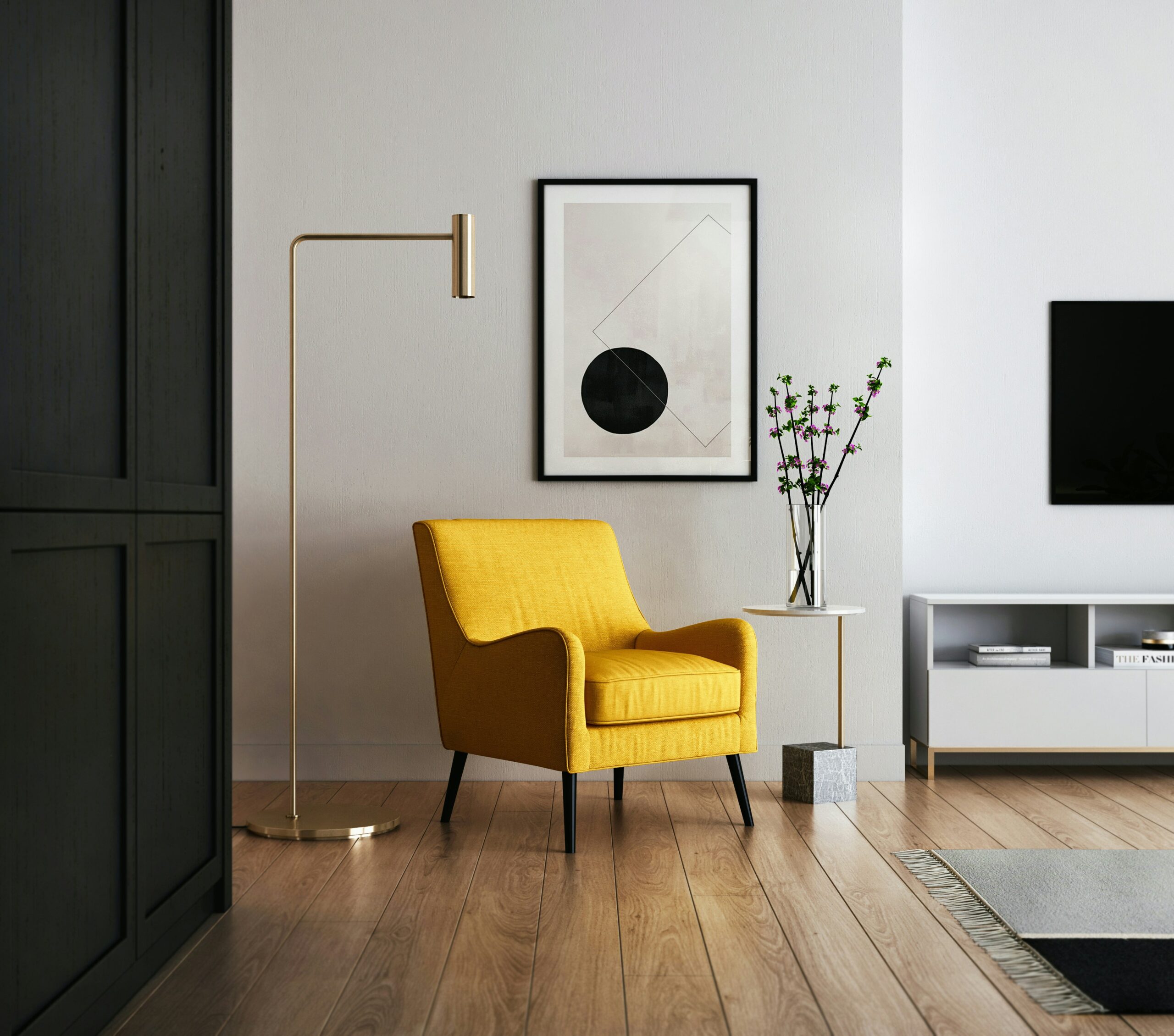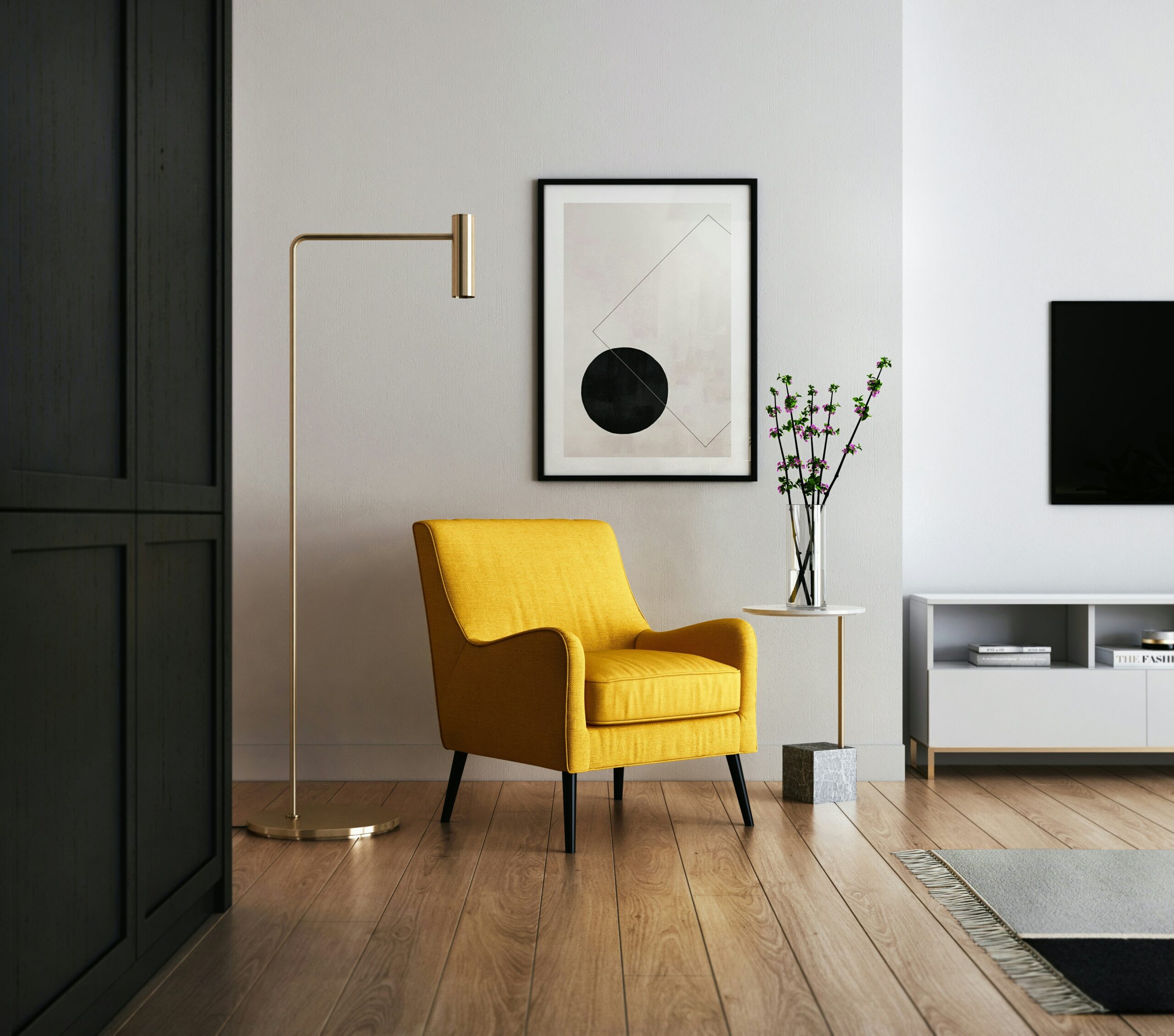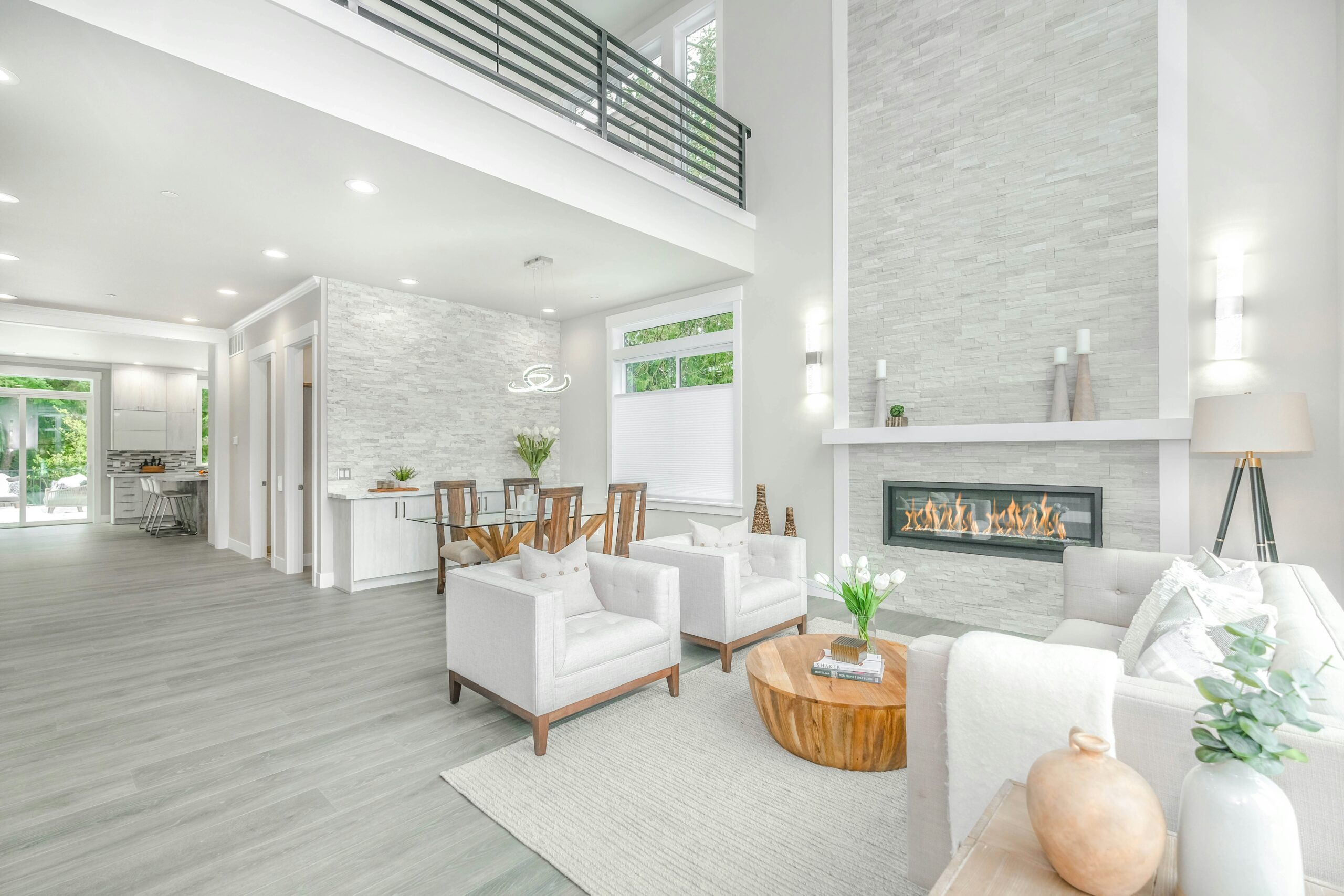Interior design trends are pivotal in reflecting the values, aesthetics, and lifestyles of society at any given time. As we approach 2025, the landscape of interior design is being significantly shaped by various factors, including technological advancements, cultural shifts, and heightened awareness of environmental issues. Traditionally, interior design has evolved in response to historical events, materials, and innovations, but the current trajectory signposts a future where sustainability and technology coalesce in fascinating ways.
The notion of sustainability has gained particular traction, with designers increasingly prioritizing eco-friendly materials and energy-efficient solutions in their projects. As we progress towards 2025, the impact of climate change and the urgent push for eco-conscious living will substantially influence interior design trends. Consequently, we can anticipate a greater emphasis on biophilic design, which integrates nature into indoor spaces, thereby enhancing comfort and well-being while reducing carbon footprints.
In addition, the role of technology in interior design cannot be overstated. The advent of smart homes and innovations in design software has transformed how spaces are conceived and executed. Interior designers are now leveraging advanced technologies to create adaptable and immersive environments, one that resonates with the needs of modern occupants. This intersection between the digital world and physical spaces will undeniably redefine user experiences and expectations in the upcoming years.
This blog post aims to delve into the key trends emerging in interior design for 2025, emphasizing sustainability and technology. By examining these trends, we hope to provide insights not only into their implications for contemporary spaces but also to highlight how they reflect a broader cultural shift towards responsible living and innovative design practices. As we navigate this dynamic field, it is essential to stay attuned to these evolving trends that are poised to shape our environment.
Sustainable Materials: The Future of Eco-Friendly Design
As we approach 2025, the trend of incorporating sustainability into interior design continues to gain traction. The increasing awareness of environmental issues has led designers and homeowners alike to seek out sustainable materials that minimize their ecological footprint. Among the most popular sustainable materials are recycled, upcycled, and sustainably sourced options. These materials not only contribute to reducing waste but also enhance the aesthetic appeal of interior spaces.
Recycled materials, such as glass, metal, and plastics, are critical components in the eco-friendly design movement. By repurposing these materials, designers can create stunning installations and furnishings that tell a story of transformation. Similarly, upcycled materials facilitate the creative reuse of items that might otherwise end up in landfills. For instance, old wood can be refinished into beautiful furniture pieces, while reclaimed bricks can be used to create striking accent walls. These approaches not only contribute to sustainability but also imbue interiors with a unique character and charm.
Sustainably sourced materials, such as bamboo and cork, are also becoming more prevalent in modern design. These materials are known for their fast growth and minimal impact on the environment. Bamboo, for example, can be harvested in just a few years, while cork can be obtained without harming the tree, allowing it to continue growing. Such materials align with the ethos of eco-friendly design by promoting conservation and responsible sourcing practices.
Numerous case studies showcase successful implementations of these sustainable materials in interior design. Projects that prioritize eco-friendly choices not only reduce environmental impact but also improve indoor air quality and enhance occupant health. As the trend towards sustainable materials gains momentum, it reflects a broader commitment to creating spaces that are not just beautiful, but also responsible and beneficial for future generations.
Smart Homes: Integrating Technology into Design
The emergence of smart home technology is revolutionizing the field of interior design, presenting exciting possibilities for both residential and commercial spaces. In the context of tren interior design 2025, homeowners and designers alike are discovering that integrating technology can enhance the functionality and aesthetics of living environments. This growing trend is characterized by the seamless incorporation of various smart technologies designed to elevate convenience and efficiency.
One of the critical components of this technological integration involves the Internet of Things (IoT). IoT-enabled devices allow homeowners to control lighting, heating, security systems, and even appliances remotely. The ability to manage such systems from a smartphone or tablet streamlines daily activities, thereby enhancing the overall living experience. Additionally, sensors can be incorporated into designs to monitor environmental factors such as air quality and temperature, providing real-time data that supports health and well-being. This seamless blending of technology with interior design encourages a more personalized and adaptive space—one that responds to the needs and preferences of its occupants.
Artificial Intelligence (AI) is another significant player in the landscape of tren interior design 2025. AI-driven systems can learn user habits and preferences over time, allowing for a more intuitive interaction with home technologies. For instance, smart assistants can adjust lighting or temperature settings based on time of day or occupancy, ensuring both comfort and energy efficiency. This sophistication not only boosts convenience but also supports sustainability efforts by minimizing energy consumption and promoting eco-friendly practices.
As the trend towards smart homes continues to gain traction, designers will need to consider the implications of technology on their creative processes. By emphasizing the harmonious integration of technology into interior spaces, the future of design promises to be both functional and aesthetically pleasing. In conclusion, the incorporation of smart technologies into interior design represents a pivotal shift that will inform design choices in 2025 and beyond.
Biophilic Design: Connecting with Nature Indoors
Biophilic design is a concept that seeks to create a connection between interior spaces and the natural world, which is increasingly relevant in the context of tren interior design 2025. This approach emphasizes incorporating elements found in nature into our living and working environments, promoting enhanced well-being and productivity. By understanding and applying biophilic design principles, designers can cultivate spaces that not only look appealing but also support mental and physical health.
One of the fundamental strategies in biophilic design is the use of natural light. Research has shown that access to natural light improves mood, reduces stress, and enhances cognitive function. To embrace this principle, designers should maximize window placements, use reflective surfaces to disseminate light, and create open spaces that facilitate sunlight penetration. Additionally, incorporating greenery indoors is another essential aspect of this design philosophy. Indoor plants not only purify the air but also create a more stimulating and lively atmosphere. In tren interior design 2025, the use of vertical gardens and hanging planters is anticipated to become more prevalent, providing aesthetic appeal while optimizing space.
Water features also play a significant role in biophilic design, as the sound and sight of water can bring a calming effect to any space. Indoor fountains, aquariums, or even subtle water walls can be strategically placed to enhance tranquility. Moreover, color palettes inspired by nature—earthy tones such as greens, browns, and blues—can be used to evoke the natural landscape within interior environments. Successful implementations of these design elements, such as in offices that prioritize employee health or homes that embrace sustainable living, showcase the growing awareness of how closely our surroundings impact our well-being. In conclusion, biophilic design represents a harmonious blend of nature and interior spaces that aligns with tren interior design trends as we move towards 2025.
Color Palettes of 2025: Bold and Individualistic Choices
As we approach 2025, the landscape of interior design is witnessing a remarkable shift towards bold and individualistic color palettes. These trends reflect not only a desire for personal expression but also a growing acknowledgment of the psychological effects that color has on mood and well-being. The upcoming color selections are expected to be vibrant and diverse, allowing homeowners to curate their spaces with colors that resonate with their personal stories and lifestyles.
One of the major trends for 2025 is the inclination towards striking combinations that include deep jewel tones, energetic hues, and earthy shades. For instance, combinations such as emerald green alongside burnt orange can create dynamic visual contrasts that invigorate living spaces. Additionally, pastel shades will be paired with bolder tones to create a balanced yet stimulating atmosphere. The integration of color will not only enhance the aesthetic appeal of an environment but will also allow individuals to cultivate spaces that reflect their emotional states and preferences.
Cultural influences play a significant role in shaping these design choices, with colors often drawing inspiration from various global cultures. For instance, regional palettes inspired by traditional art forms or landscapes provide an enriching depth to interior spaces. Moreover, as we become more aware of our surroundings and the impacts of our choices, color selections increasingly reflect our connection to nature, emphasizing greens, browns, and other natural tones. This connection underpins the trend towards sustainable living, where color choices mirror our respect for the environment.
To incorporate these color palettes into interior spaces, consider starting with accent walls or strategically placed decor items that introduce particular shades without overwhelming the overall design. Pairing bold colors with neutral tones can also create a harmonious balance while ensuring that the space remains inviting and stylish. Through these chosen colors, individuals can infuse their personal narratives into their living environments, culminating in spaces that are both unique and profoundly meaningful.
Multifunctional Furniture: Adaptability in Design
As urban living continues to evolve, the demand for multifunctional furniture is becoming increasingly prominent in the realm of tren interior design 2025. With a growing number of individuals residing in smaller spaces, furniture that serves multiple purposes is not just a trend but a necessity. This shift towards versatility reflects the need for adaptability in design, allowing homeowners to maximize their available space while maintaining aesthetics and functionality.
Multifunctional furniture encompasses a wide range of designs that combine various uses into a single piece. Examples include sofa beds, extendable dining tables, and coffee tables with storage solutions. These innovative pieces are designed to cater to the needs of contemporary living, catering to both social gatherings and day-to-day functionalities. Furthermore, as the lines between work and home life continue to blur, office furniture that easily transforms into other types of furniture is gaining traction, fostering a seamless transition throughout the day.
The benefits of incorporating multifunctional furniture extend beyond space-saving capabilities. This type of design promotes an organized living environment, encouraging decluttering and simplifying the overall aesthetics of a space. Moreover, it opens up opportunities for creative customization. For instance, a modular sofa can be rearranged to fit various room layouts, allowing homeowners to adapt their living space according to their needs and preferences.
Integrating multifunctional designs into different rooms can be an inspiring undertaking. In a living room, a stylish ottoman that doubles as storage can enhance both its visual appeal and practical use. In a bedroom, a bed with built-in drawers can maximize space efficiency without sacrificing comfort. Thus, as we embrace the principles of tren interior design 2025, multifunctional furniture stands at the forefront, ready to meet the challenges of modern living while promoting a harmonious balance between style and utility.
Minimalism vs. Maximalism: Finding the Right Balance
The interior design landscape is often dominated by the two polar styles of minimalism and maximalism, each offering distinct philosophies and visual aesthetics. Minimalism focuses on simplicity, incorporating clean lines, neutral colors, and a decluttered space that emphasizes functional design. This style promotes a sense of calm and clarity, making it a popular choice for modern interiors that prioritize open spaces and natural light. As we approach 2025, minimalism’s appeal lies in its sustainability-oriented choices, utilizing eco-friendly materials and energy-efficient designs.
Conversely, maximalism embraces an abundance of color, texture, and eclecticism. This style celebrates individuality and personality, encouraging homeowners to express themselves through vibrant patterns and varied influences. With an emphasis on layers and bold design choices, maximalism reintroduces the idea of curated chaos where each item tells a story. The trend towards maximalism is gaining traction as it advocates for a more expressive home environment that reflects the owner’s tastes and backgrounds, contrasting the restrained aesthetics of minimalism.
However, the future of interior design in 2025 is witnessing a synthesis of these two styles, often referred to as ‘neo-eclecticism.’ This emerging trend encourages a harmonious blending of minimalist and maximalist elements to forge personalized spaces that cater to both practicality and aesthetics. Achieving this balance entails selecting key minimalist pieces—such as sleek furniture—while allowing for maximalist accents, like vibrant artwork or layered textiles. To apply this technique, homeowners can adopt a selective approach, integrating standout pieces within a streamlined environment, thereby creating an engaging yet organized space. By thoughtfully merging the principles of minimalism and maximalism, designers can help clients achieve a unique and inviting atmosphere that resonates on a personal level.
Cultural Influences in Interior Design Trends
Cultural influences play a significant role in shaping interior design trends for 2025, as designers increasingly draw inspiration from a diverse array of global traditions and styles. The contemporary emphasis on cross-cultural exchange is fostering a vibrant dialogue in the design world, wherein elements from various cultures are fused to create innovative, inclusive spaces. This blending of aesthetics not only enriches the design landscape but also promotes understanding and appreciation for different heritages, reflecting a growing awareness of cultural significance in residential and commercial environments.
One key aspect of the cultural landscape in interior design is the importance of incorporating cultural heritage into contemporary settings. This approach honors historical craftsmanship, materials, and motifs that can add depth and character to modern spaces. By integrating elements that symbolize cultural identity, designers can evoke a sense of place and belonging, creating interiors that resonate with personal and communal narratives. As we navigate towards 2025, the notion of storytelling through design becomes a focal point, with designers striving to evoke emotional connections through carefully curated cultural elements.
Furthermore, the integration of global aesthetics into local designs fosters unique outcomes that are both representative of the environment and resonant with a broader audience. As the barriers between cultural expressions continue to blur, designers can craft spaces that are not only visually appealing but also reflect a tapestry of global influences and community values. This trend has led to the emergence of hybrid styles that celebrate diversity while still adhering to the principles of sustainability and functionality. In essence, the cultural influences shaping interior design trends for 2025 create a dynamic platform for expression that enriches living spaces while honoring the heritage of various cultural backgrounds.
Conclusion: The Future of Interior Design
As we look ahead to the trends in interior design for 2025, it is evident that the focus will not only be on aesthetics but also on sustainability and technological integration. The convergence of these elements is shaping a new landscape for interior spaces, introducing eco-friendly materials and smart technologies that enhance functionality while remaining visually appealing. Innovations in design processes are increasingly considering environmental impact, encouraging designers and homeowners alike to prioritize sustainable choices. Such a shift paves the way for a more responsible approach towards consuming and utilizing resources in our built environments.
A key trend that is forecasted to gain momentum is the incorporation of biophilic design elements. This approach emphasizes the connection between indoor spaces and nature, fostering well-being through the integration of plants, natural light, and organic materials. As individuals become more aware of the importance of their surroundings on mood and health, biophilic design is set to be a cornerstone of interior aesthetics in 2025. Additionally, personalized spaces that reflect individual values and preferences will become increasingly sought after, leading to a move towards bespoke design solutions that challenge the notion of traditional interior spaces.
In a world dominated by technology, smart home features are anticipated to become standard within interior design. From intuitive lighting to energy-efficient systems, these advancements offer enhanced convenience and sustainability. As designers harness these innovations, they will create environments that not only meet the demands of modern living but also promote a harmonious coexistence with the planet. Embracing these trends not only elevates the interior experience but also aligns with a growing commitment to sustainability in design. Thus, as we proceed towards 2025, families and businesses are encouraged to reflect on how these emerging trends can align with their lifestyles, ultimately creating spaces that are both functional and meaningful.





Leave a Comment